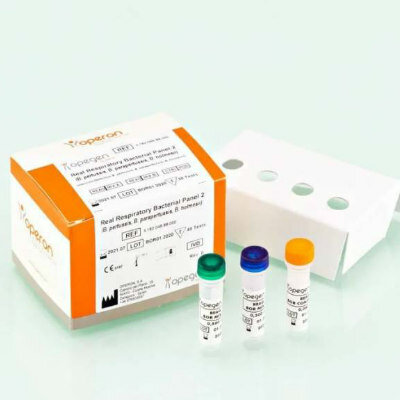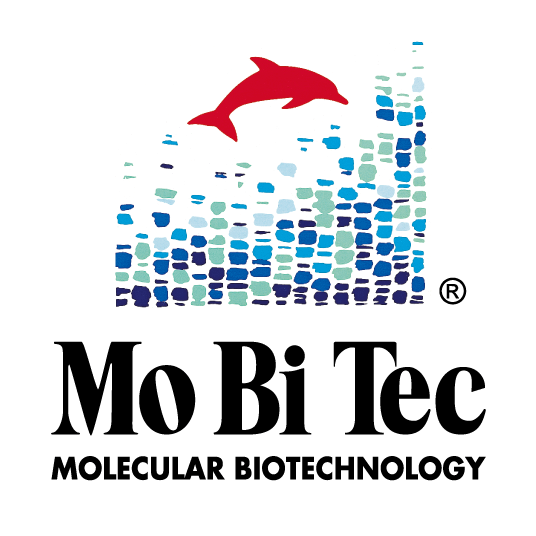Revolution in Rapid Testing: A New Generation of Programmable Lateral Flow Assays
|
By LabMedica International staff writers Posted on 25 Oct 2021 |

Image: The fully assembled liquid flow assay (Photo courtesy of Allison Carter)
Researchers have modified and enhanced the commonly used lateral flow assay method by introducing a technique to control the rate of capillary flow, which enables the test strip to carry out multistep chemical reactions following a programmed sequence.
Lateral flow assays (LFTs) have a wide array of applications and can be used to analyze a variety of samples such as urine, blood, saliva, sweat, serum, and other fluids. They are currently used by clinical laboratories, hospitals, and physicians for quick and accurate tests for specific target molecules and gene expression. Other uses for lateral flow assays are food and environmental safety and veterinary medicine for chemicals, diseases, and toxins. LFTs are also used for disease identification, but the most common LFT is the home pregnancy test.
A weakness of the conventional LFA method is that the physical characteristics of capillary flow prevents them from being able to coordinate complex processes that include the application of multiple reagents in a specific sequence with specific delays in between.
In response to this problem, investigators at the Georgia Institute of Technology (Atlanta, USA) recently described a way to control capillary flow by imprinting roadblocks on the flow path with water-insoluble ink and using the gradual formation of a void between a wetted paper and a sheath polymer tape to create timers. Timers were drawn at strategic nodes to hold the capillary flow for a desired period and thereby enabled multiple liquids to be introduced into multistep chemical reactions following a programmed sequence. By modifying the imprint geometry, the investigators could set the time required for a void to form and effectively created timers that blocked capillary flow for a desired duration.
The investigators employed the new technique to develope (i) an LFA with built-in signal amplification to detect human chorionic gonadotropin with an order of magnitude higher sensitivity than the conventional assay and (ii) a device to extract DNA from bodily fluids without relying on laboratory instruments. The latter device has potential for use as a rapid test for detection of Covid-19 infection.
"These tests have been extremely popular for years, mainly because they are so simple to use. You do not send anything to the lab or clinic because these tests do not require any external equipment to operate. This is an advantage," said senior author Dr. Fatih Sarioglu, assistant professor of electrical and computer engineering at the Georgia Institute of Technology. "But there also is a disadvantage. There are limitations to what they can do. By strategically imprinting these timers, we can program the assays to coordinate different capillary flows. That enables multiple liquids to be introduced, and multistep chemical reactions, with optimal incubation times - so, we can perform complex, automated assays that otherwise would normally have to be performed in laboratories. This takes us beyond the conventional LFA."
"We believe this flow technology research will have widespread impact," said Dr. Sarioglu. "This kind of dipstick test is so commonly used by the public for biomedical testing, and now it can be translated into other applications that we do not traditionally consider to be cut out for these simple tests."
The enhanced LFA technique was described in the October 1, 2021, online edition of the journal Science Advances.
Related Links:
Georgia Institute of Technology
Lateral flow assays (LFTs) have a wide array of applications and can be used to analyze a variety of samples such as urine, blood, saliva, sweat, serum, and other fluids. They are currently used by clinical laboratories, hospitals, and physicians for quick and accurate tests for specific target molecules and gene expression. Other uses for lateral flow assays are food and environmental safety and veterinary medicine for chemicals, diseases, and toxins. LFTs are also used for disease identification, but the most common LFT is the home pregnancy test.
A weakness of the conventional LFA method is that the physical characteristics of capillary flow prevents them from being able to coordinate complex processes that include the application of multiple reagents in a specific sequence with specific delays in between.
In response to this problem, investigators at the Georgia Institute of Technology (Atlanta, USA) recently described a way to control capillary flow by imprinting roadblocks on the flow path with water-insoluble ink and using the gradual formation of a void between a wetted paper and a sheath polymer tape to create timers. Timers were drawn at strategic nodes to hold the capillary flow for a desired period and thereby enabled multiple liquids to be introduced into multistep chemical reactions following a programmed sequence. By modifying the imprint geometry, the investigators could set the time required for a void to form and effectively created timers that blocked capillary flow for a desired duration.
The investigators employed the new technique to develope (i) an LFA with built-in signal amplification to detect human chorionic gonadotropin with an order of magnitude higher sensitivity than the conventional assay and (ii) a device to extract DNA from bodily fluids without relying on laboratory instruments. The latter device has potential for use as a rapid test for detection of Covid-19 infection.
"These tests have been extremely popular for years, mainly because they are so simple to use. You do not send anything to the lab or clinic because these tests do not require any external equipment to operate. This is an advantage," said senior author Dr. Fatih Sarioglu, assistant professor of electrical and computer engineering at the Georgia Institute of Technology. "But there also is a disadvantage. There are limitations to what they can do. By strategically imprinting these timers, we can program the assays to coordinate different capillary flows. That enables multiple liquids to be introduced, and multistep chemical reactions, with optimal incubation times - so, we can perform complex, automated assays that otherwise would normally have to be performed in laboratories. This takes us beyond the conventional LFA."
"We believe this flow technology research will have widespread impact," said Dr. Sarioglu. "This kind of dipstick test is so commonly used by the public for biomedical testing, and now it can be translated into other applications that we do not traditionally consider to be cut out for these simple tests."
The enhanced LFA technique was described in the October 1, 2021, online edition of the journal Science Advances.
Related Links:
Georgia Institute of Technology
Latest Molecular Diagnostics News
- Blood Biomarker Test Could Detect Genetic Predisposition to Alzheimer’s
- Novel Autoantibody Against DAGLA Discovered in Cerebellitis
- Blood Test Could Identify Patients at Risk for Severe Scleroderma
- Gene-Based Blood Test Accurately Predicts Tumor Recurrence of Advanced Skin Cancer
- Rapid Blood Test Identifies Pre-Symptomatic Patients with Parkinson’s Disease
- Blood Test for Early Alzheimer's Detection Achieves Over 90% Accuracy
- RNA-Based Blood Test Detects Preeclampsia Risk Months Before Symptoms
- First Of Its Kind Test Uses microRNAs to Predict Toxicity from Cancer Therapy
- Novel Cell-Based Assay Provides Sensitive and Specific Autoantibody Detection in Demyelination
- Novel Point-of-Care Technology Delivers Accurate HIV Results in Minutes
- Blood Test Rules Out Future Dementia Risk
- D-Dimer Testing Can Identify Patients at Higher Risk of Pulmonary Embolism
- New Biomarkers to Improve Early Detection and Monitoring of Kidney Injury
- Chemiluminescence Immunoassays Support Diagnosis of Alzheimer’s Disease
- Blood Test Identifies Multiple Biomarkers for Rapid Diagnosis of Spinal Cord Injury
- Highly Accurate Blood Test Diagnoses Alzheimer’s and Measures Dementia Progression
Channels
Clinical Chemistry
view channel
‘Brilliantly Luminous’ Nanoscale Chemical Tool to Improve Disease Detection
Thousands of commercially available glowing molecules known as fluorophores are commonly used in medical imaging, disease detection, biomarker tagging, and chemical analysis. They are also integral in... Read more
Low-Cost Portable Screening Test to Transform Kidney Disease Detection
Millions of individuals suffer from kidney disease, which often remains undiagnosed until it has reached a critical stage. This silent epidemic not only diminishes the quality of life for those affected... Read more
New Method Uses Pulsed Infrared Light to Find Cancer's 'Fingerprints' In Blood Plasma
Cancer diagnoses have traditionally relied on invasive or time-consuming procedures like tissue biopsies. Now, new research published in ACS Central Science introduces a method that utilizes pulsed infrared... Read moreHematology
view channel
New Scoring System Predicts Risk of Developing Cancer from Common Blood Disorder
Clonal cytopenia of undetermined significance (CCUS) is a blood disorder commonly found in older adults, characterized by mutations in blood cells and a low blood count, but without any obvious cause or... Read more
Non-Invasive Prenatal Test for Fetal RhD Status Demonstrates 100% Accuracy
In the United States, approximately 15% of pregnant individuals are RhD-negative. However, in about 40% of these cases, the fetus is also RhD-negative, making the administration of RhoGAM unnecessary.... Read moreImmunology
view channel
Stem Cell Test Predicts Treatment Outcome for Patients with Platinum-Resistant Ovarian Cancer
Epithelial ovarian cancer frequently responds to chemotherapy initially, but eventually, the tumor develops resistance to the therapy, leading to regrowth. This resistance is partially due to the activation... Read more
Machine Learning-Enabled Blood Test Predicts Immunotherapy Response in Lymphoma Patients
Chimeric antigen receptor (CAR) T-cell therapy has emerged as one of the most promising recent developments in the treatment of blood cancers. However, over half of non-Hodgkin lymphoma (NHL) patients... Read moreMicrobiology
view channel
Handheld Device Delivers Low-Cost TB Results in Less Than One Hour
Tuberculosis (TB) remains the deadliest infectious disease globally, affecting an estimated 10 million people annually. In 2021, about 4.2 million TB cases went undiagnosed or unreported, mainly due to... Read more
New AI-Based Method Improves Diagnosis of Drug-Resistant Infections
Drug-resistant infections, particularly those caused by deadly bacteria like tuberculosis and staphylococcus, are rapidly emerging as a global health emergency. These infections are more difficult to treat,... Read more
Breakthrough Diagnostic Technology Identifies Bacterial Infections with Almost 100% Accuracy within Three Hours
Rapid and precise identification of pathogenic microbes in patient samples is essential for the effective treatment of acute infectious diseases, such as sepsis. The fluorescence in situ hybridization... Read morePathology
view channel
Novel UV and Machine Learning-Aided Method Detects Microbial Contamination in Cell Cultures
Cell therapy holds great potential in treating diseases such as cancers, inflammatory conditions, and chronic degenerative disorders by manipulating or replacing cells to restore function or combat disease.... Read more
New Error-Corrected Method to Help Detect Cancer from Blood Samples Alone
"Liquid biopsy" technology, which relies on blood tests for early cancer detection and monitoring cancer burden in patients, has the potential to transform cancer care. However, detecting the mutational... Read more
"Metal Detector" Algorithm Hunts Down Vulnerable Tumors
Scientists have developed an algorithm capable of functioning as a "metal detector" to identify vulnerable tumors, marking a significant advancement in personalized cancer treatment. This breakthrough... Read more
Novel Technique Uses ‘Sugar’ Signatures to Identify and Classify Pancreatic Cancer Cell Subtypes
Pancreatic cancer is often asymptomatic in its early stages, making it difficult to detect until it has progressed. Consequently, only 15% of pancreatic cancers are diagnosed early enough to allow for... Read moreTechnology
view channel
Disposable Microchip Technology Could Selectively Detect HIV in Whole Blood Samples
As of the end of 2023, approximately 40 million people globally were living with HIV, and around 630,000 individuals died from AIDS-related illnesses that same year. Despite a substantial decline in deaths... Read more
Pain-On-A-Chip Microfluidic Device Determines Types of Chronic Pain from Blood Samples
Chronic pain is a widespread condition that remains difficult to manage, and existing clinical methods for its treatment rely largely on self-reporting, which can be subjective and especially problematic... Read more
Innovative, Label-Free Ratiometric Fluorosensor Enables More Sensitive Viral RNA Detection
Viruses present a major global health risk, as demonstrated by recent pandemics, making early detection and identification essential for preventing new outbreaks. While traditional detection methods are... Read moreIndustry
view channel
Cepheid and Oxford Nanopore Technologies Partner on Advancing Automated Sequencing-Based Solutions
Cepheid (Sunnyvale, CA, USA), a leading molecular diagnostics company, and Oxford Nanopore Technologies (Oxford, UK), the company behind a new generation of sequencing-based molecular analysis technologies,... Read more
Grifols and Tecan’s IBL Collaborate on Advanced Biomarker Panels
Grifols (Barcelona, Spain), one of the world’s leading producers of plasma-derived medicines and innovative diagnostic solutions, is expanding its offer in clinical diagnostics through a strategic partnership... Read more









.jpg)









